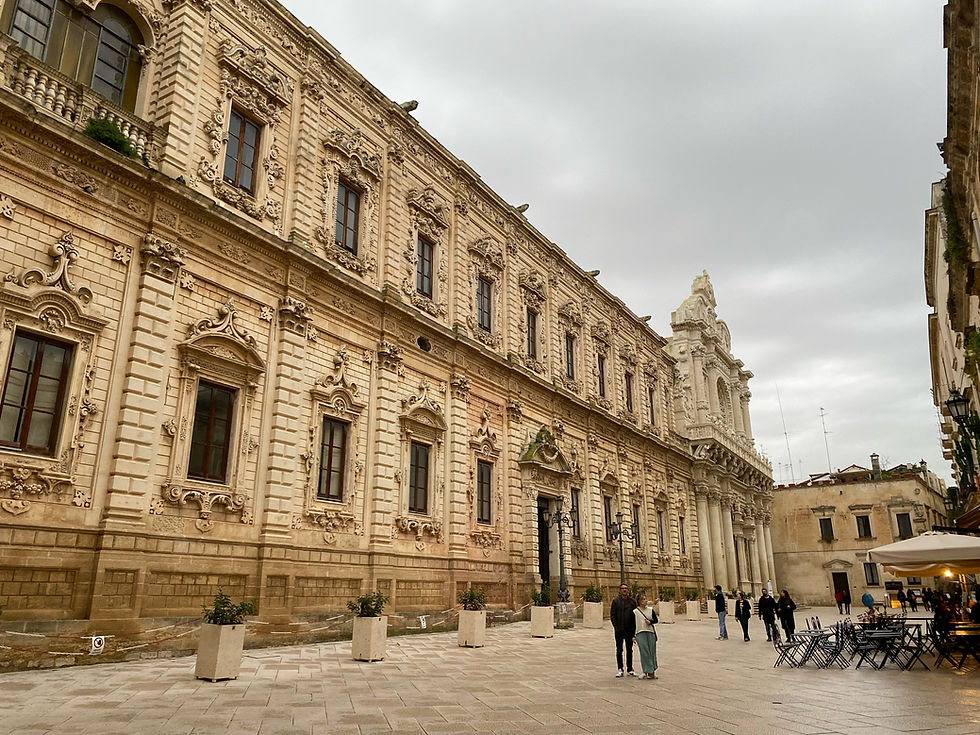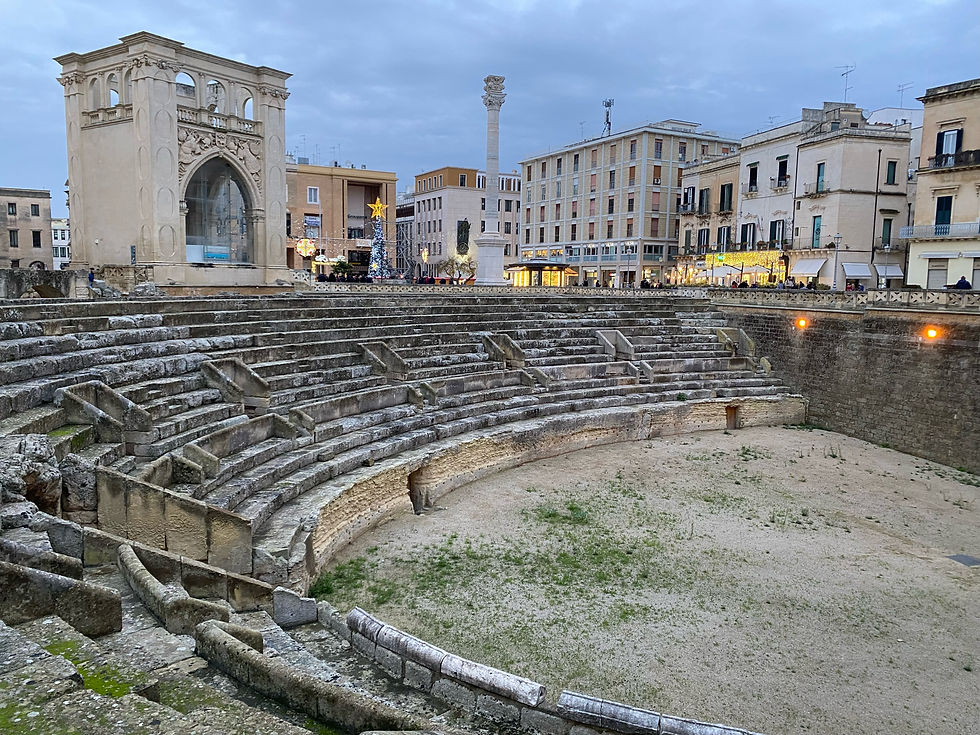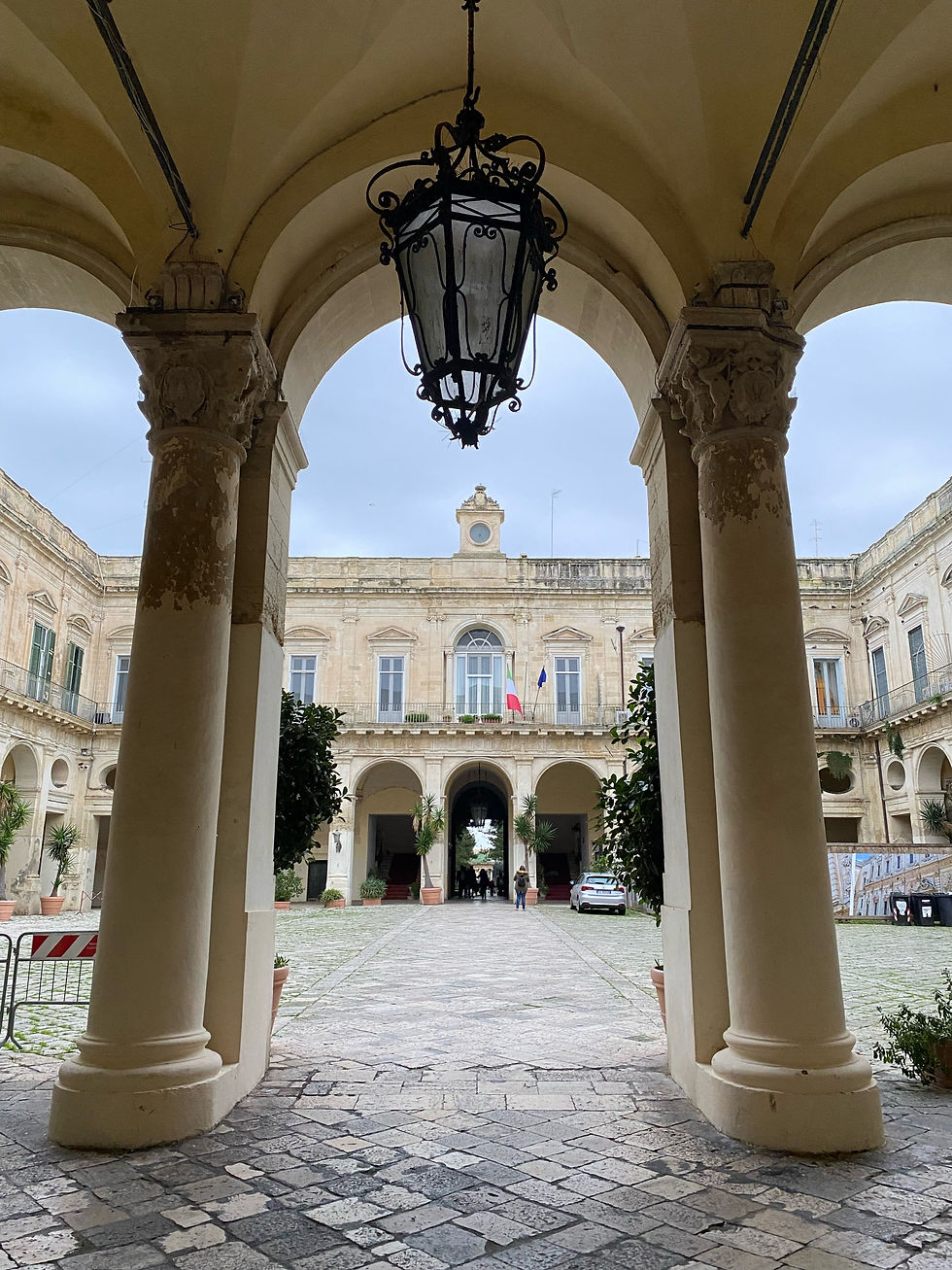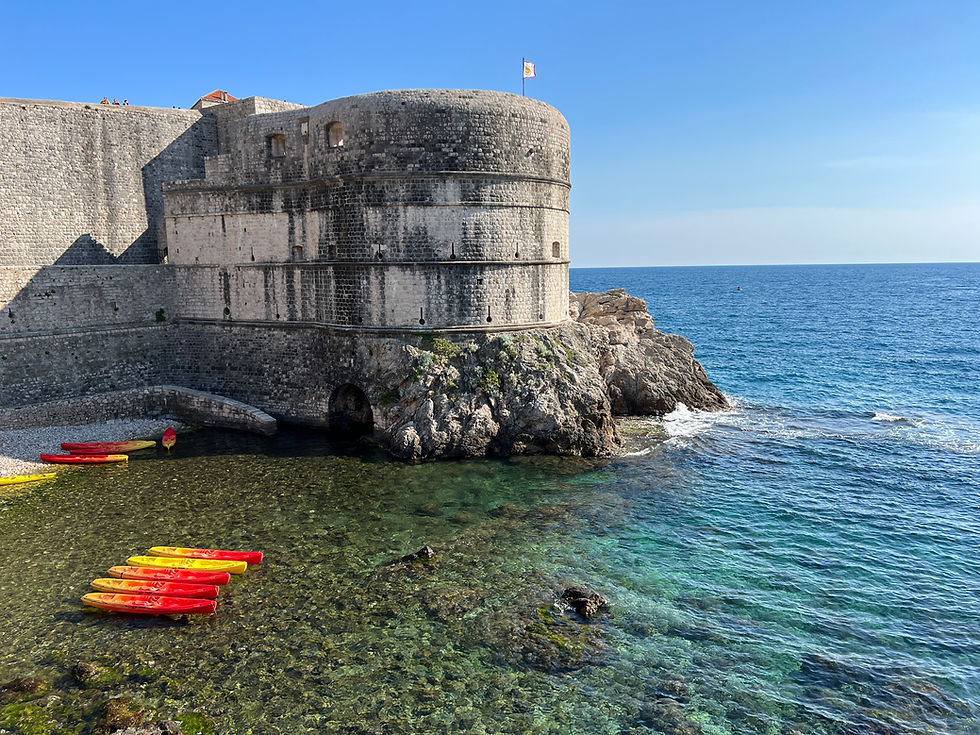A Guide to Lecce, Italy: Puglia’s Baroque Jewel
- Will Gerson
- Aug 21
- 2 min read
Updated: Nov 20
Located in Salento, the heel of the boot of Italy, the city of Lecce is an open-air museum of Baroque architecture, forged in the native limestone known as ‘Lecce stone.’ This stone is renowned for its softness and malleability before hardening over time with exposure to air, allowing for intricate carvings and decoration that last for centuries without wear.

As part of the Kingdom of Sicily, Lecce was one of the most important cities of southern Italy from the 15th century onward, with important production of olive oil, wine, and ceramics. The riches accrued by the city were poured into lavish churches and palaces, protected by a series of defensive walls and a fort built by Holy Roman Emperor Charles V.

Today, Lecce remains a charming city of great architectural beauty, with its monuments of light yellow limestone bathed in the warm colors of the mezzogiorno sun. Read on for a guide to help you spend a day exploring this lovely place.
Basilica di Santa Croce
This 17th-century church has a meticulously decorated facade, with three-dimensional figures of animals, grotesques, and vegetation emerging in lifelike detail from the stone and a rose window in its center. The facade is an excellent example of the unique design possibilities afforded by the Lecce stone, with its ornate carvings akin to that of a sandcastle.

Duomo di Lecce
Lecce’s cathedral is another masterpiece of Italian Baroque architecture, particularly its northern facade. The city’s first cathedral was built on this spot in the 12th century, but the one you see today dates from the 17th century, as do most of the city’s other buildings in this style. The altar holds the remains of Saint Orontius, patron saint of Lecce.

Anfiteatro Romano
Lecce’s Roman amphitheater is located right in the middle of the city’s main square, the Piazza Sant’Oronzo. Though it was built under the reign of Hadrian in the 2nd century AD, the 15,000-seat amphitheater wasn’t discovered until 1901, when it was unearthed by construction workers building a bank.

Castello Carlo V
This castle was erected in the 16th century by Charles V, Holy Roman Emperor, to ward off a potential invasion by the Ottoman Empire. Today, the castle is a museum that is free to visit.
Osteria Da Angiulino
A fabulous restaurant that you should definitely visit during your time in Lecce. Tough to go wrong with anything on the menu, but I’d recommend a pasta dish with orecchiette, the classic shape of Puglia. For adventurous eaters, polpette di cavallo (horse meatballs) are another local speciality.

Natale Pasticceria
Lecce is especially famous for its pastries, and there is no better place to indulge than Natale. Two pastries stand out among the rest. On the sweet side, the pasticciotto is a delectable, oblong pastry filled with egg custard; try it warm fresh out of the oven, and I don’t think you’ll be able to stop at just one. And on the savory side, the rustico is a delightful street food consisting of a circular puff pastry filled with tomato and mozzarella. Not to be missed.
Looking for more places to explore in the region? Visit our Puglia page here.



